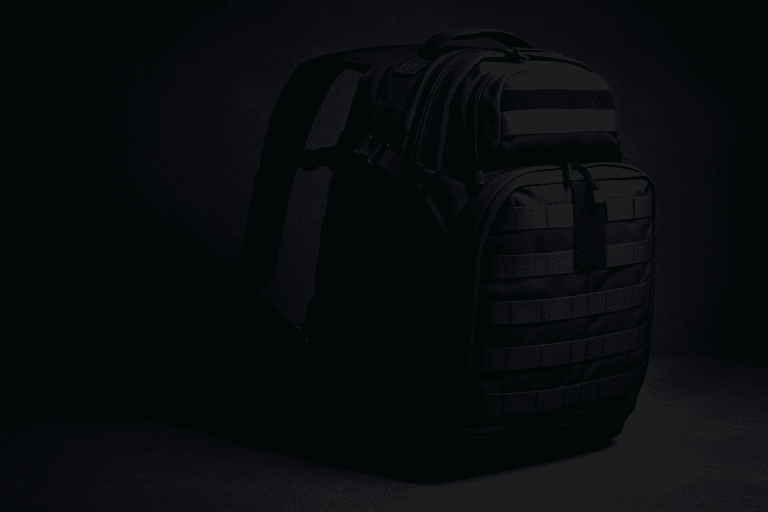How to Prepare for a Two-Week Power Outage: The Complete Survival Guide
Two-week power outage preparedness is about far more than keeping a flashlight handy and a couple of canned goods in the pantry. It’s about having a clear, well-practiced plan that keeps you and your family safe, fed, warm, and connected when modern conveniences disappear for days on end. When the power goes out for a couple of hours, it’s an inconvenience. When it’s gone for two full weeks, it becomes a true test of your survival readiness — one that will challenge your resourcefulness, problem-solving skills, and ability to adapt to rapidly changing conditions.
This post contains affiliate links. I may earn a small commission at no extra cost to you. Learn more.
Imagine your home suddenly without refrigeration, running water, internet, or reliable heating and cooling for 14 straight days. Perishable food starts to spoil within 24–48 hours, municipal water supplies may be disrupted, and electric stoves or microwaves are nothing more than kitchen ornaments. For many, that means no way to store fresh food, cook meals, or maintain normal hygiene routines. Add to that the risk of total darkness at night, possible breakdowns in communication, and even increased security threats — and the stakes become clear.
Whether triggered by severe storms, wildfires, hurricanes, extended grid failures, or even cyberattacks, long-term blackouts happen more often than most people realize. History has shown that when the lights go out for days or weeks, those who are unprepared are left scrambling for basic necessities — often competing with thousands of others who waited too long to act.
This guide will walk you step-by-step through exactly how to prepare for a two-week power outage, from calculating your family’s water and food needs to securing safe heating, reliable lighting, backup power, and effective communication tools. We’ll also cover security measures, seasonal adjustments, and the mental resilience needed to stay calm and resourceful when the grid goes dark.
Most people prep for hours or days — but what about weeks without power? For the survival generator strategies that can carry you through, start with the hub: Best Survival & Off-Grid Generators of 2025.
1. Understand the Risks of a Long-Term Blackout
Before you prepare, you need to know what you’re up against.
A two-week outage can bring:
✅ No refrigeration – Perishable food spoils in 24–48 hours.
✅ Water shortages – Especially if you have a well pump or municipal water disruption.
✅ Cooking issues – Electric stoves and microwaves are useless.
✅ Heating or cooling loss – Winter outages can lead to hypothermia; summer outages to heatstroke.
✅ Total darkness – Increased accident risk and security concerns.
✅ Communication breakdowns – Cell towers may fail, internet goes down.
💡 Related Post: Emergency Preparedness Surviving Summer Storms
2. Calculate Your Essential Survival Needs
Here’s a two-week baseline for a family of four:
-
Water – Minimum 56 gallons (1 gallon per person per day).
-
Food – Around 112,000 calories total (2,000 calories per person per day).
-
Lighting – Multiple safe sources for 14 nights.
-
Medical & hygiene – First aid kit, medications, sanitation supplies.
Pro Tip: Always plan for at least 25% more than you think you’ll need. Blackouts can last longer than expected.
3. Water Storage & Purification
Water is your top priority — you can survive weeks without food, but only days without water.
Long-Term Storage
-
55-Gallon Water Barrel – Stores enough for one person for nearly two months.
-
Stackable 7-Gallon Containers – Easier to move and rotate.
-
Commercial Bottled Water – Quick and space-efficient for short-term.
Gear Pick:
Augason Farms Emergency Water Storage Barrel Kit — Includes pump, wrench, and treatment for safe long-term storage.
Purification
Even stored water can go stale — and emergency sources like lakes or rainwater need filtration.
-
Lifestraw Personal Water Filter Straw – Lightweight, portable, filters up to 1,000 liters.
-
Gravity water filters for multiple users.
-
Boiling for pathogens if you have fuel.
💡 Related: Ultimate Water Purification Guide
4. Food for a Two-Week Blackout
Stock non-perishable, easy-to-cook, or ready-to-eat meals.
✅ Freeze-Dried Meals – 25-year shelf life, just add water.
✅ Canned Goods – Stews, meats, beans, veggies.
✅ Dry Staples – Rice, pasta, oats.
✅ Snacks – Peanut butter, granola, trail mix.
Gear Pick:
Moutain House 2-Week Emergency Food Supply — 84 servings, just add water, 25-year shelf life.
💡 Related: Long-Term Food Storage Tips
5. Cooking Without Electricity
When the grid goes down, your oven and microwave are useless.
🔥 Options:
-
Portable propane stoves.
-
Rocket stoves (burn wood & biomass).
-
Solar ovens for sunny climates.
-
Charcoal or propane grills.
Gear Pick:
EcoZoom Versa Rocket Stove — Burns wood, charcoal, or biomass, heavy-duty build.
6. Heating & Staying Warm
In winter outages, keeping warm is survival-critical.
🔥 Options:
-
Mr. Heater Big Buddy Indoor Propane Heater — Indoor-safe, multiple heat settings.
-
Wool blankets & thermal sleeping bags.
-
Layered clothing for insulation.
7. Lighting That Lasts
Candles are risky — use safe lighting sources.
-
Rechargeable LED lanterns.
-
Solar garden lights (bring inside at night).
-
Headlamps for hands-free work.
Gear Pick:
Goal Zero Lighthouse 600 Lantern & USB Power Hub — Rechargeable via solar, crank, or USB.
8. Communication & Information
If cell towers fail, you need other ways to get news and coordinate.
📻 Gear Picks:
-
Kaito Voyager Pro NOAA Emergency Radio — Solar, crank, and battery-powered.
-
Two-way radios for local communication.
-
Ham radio for long-range (requires license).
9. Medical & Hygiene Essentials
Small injuries or illness can escalate quickly without power.
✅ First aid kits stocked with bandages, antiseptics, and OTC meds.
✅ Two-week supply of prescription medications.
✅ Hygiene items: wet wipes, hand sanitizer, toilet paper, trash bags.
10. Security During a Blackout
Power outages can mean more than just darkness — they can increase crime risk.
Recommendations:
-
Solar motion-sensor lights.
-
Quality locks & reinforced entry points.
-
Neighborhood watch coordination.
11. Backup Power Sources
Even during an outage, you can keep essentials running.
🔋Gear Pick:
Jackery Explorer 1500 Solar Generator — Powers appliances, charges devices, silent operation.
12. Mental & Emotional Preparedness
Two weeks without power can be stressful. Keep spirits up with:
-
Board games, cards, and books.
-
Maintaining a daily routine.
-
Checking in with neighbors.
13. Seasonal Adjustments
☀ Summer Outage: Focus on cooling, hydration, and food preservation without refrigeration.
❄ Winter Outage: Heating, insulation, and water storage are critical.
14. After the Power Returns
When the lights come back on:
-
Restock used supplies.
-
Take notes on what worked and what failed.
-
Upgrade weak points in your plan.
A two-week outage will test your food, water, and power reserves. Make sure your backup energy setup is squared away by reading the hub: Best Survival & Off-Grid Generators of 2025.
Final Takeaway
Preparing for a two-week power outage isn’t about panic-buying — it’s about building sustainable readiness. Start with water, food, and heat. Add reliable lighting, backup power, and security. Test your gear before you need it.
💡 Get Started Today:
-
Store at least two weeks of food & water.
-
Set up a backup cooking method.
-
Install safe lighting and heating gear.
Clean, safe water is your most critical resource during an extended blackout, and storing it is only half the battle — you also need to know how to make questionable sources drinkable when supplies run low.
Long Term Water Storage Complete Guide







